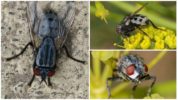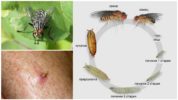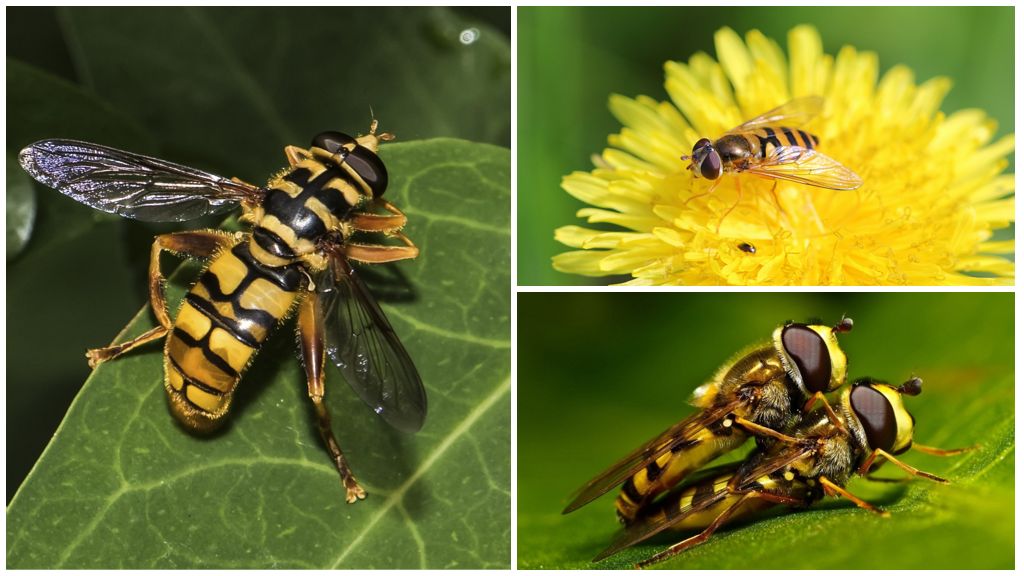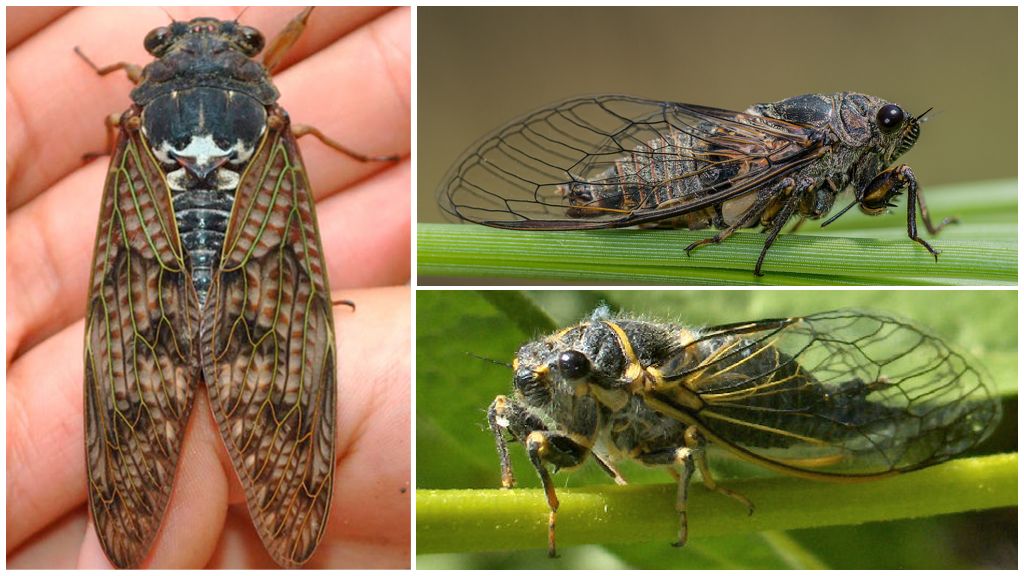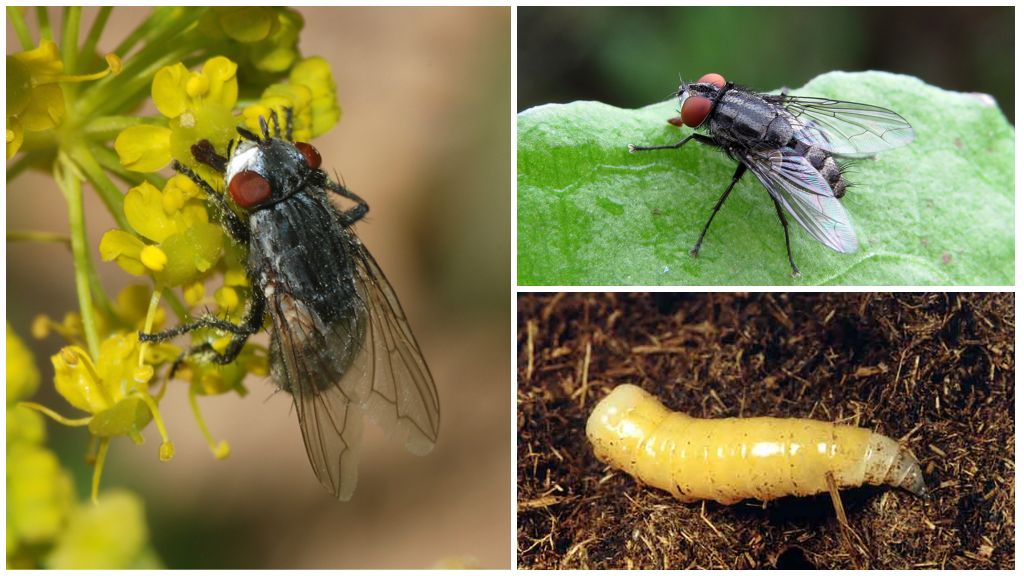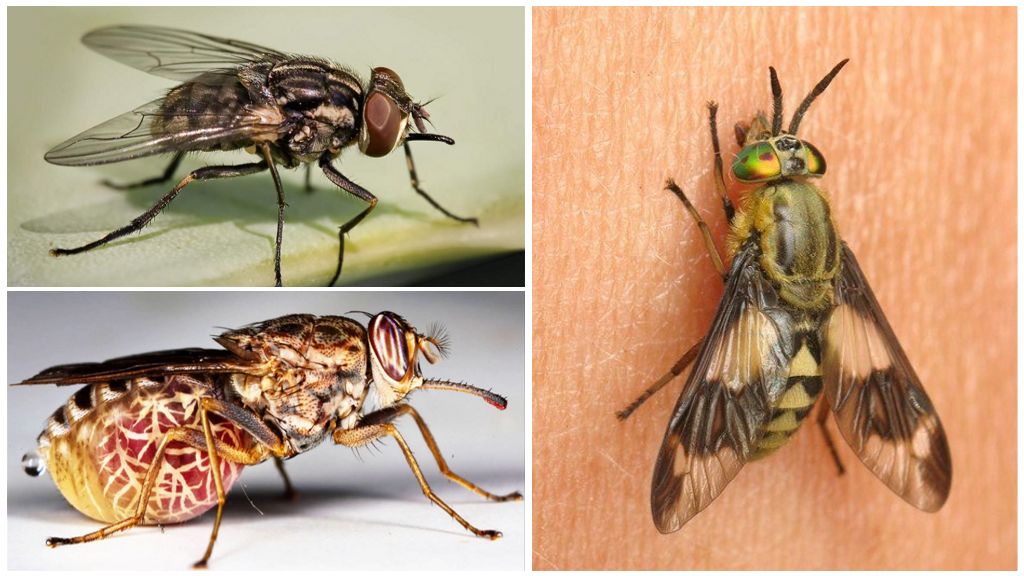- Wolfart fly
- Wolf Wolf Fly Propagation
Wolfart's fly - a representative of the gray family meat fliescharacterized by dimensions and method of growing larvae. The insect, which is very aggressive towards warm-blooded creatures, is widespread in the Caucasus and in the middle zone of Russia, in the south of Europe and in China, as well as in Mongolia and northern Africa. The habitats of Sarcophila Wolfartii or the Wolffart Fly are usually livestock pastures and livestock farms.
Insect features
The wolfarth fly is often referred to as a tungsten fly. However, the last name is incorrect. The insect is named after Wolfart, the doctor who first (in 1770) made a description of this very dangerous creature. Body structure tungsten fly is similar to ordinary room, but everything is presented in larger sizes.
- An individual of this species is large insect light gray color, the body size of which in length can be up to 14 mm.
- On the mid back, 3 dark longitudinal stripes are distinctly visible, black spots are also present on the sides of the ovoid abdomen.
- On a silver head are located faceted eyes, painted in dark red color, it also has a black antennae and a licking proboscis type.
- The insect is the owner of well-developed transparent wings. The whole body and limbs are covered with hard hairs.
- Homosexual individuals differ in the structure of the genital organs. Males also have a wider forehead (a photo of a tungsten fly is presented below).
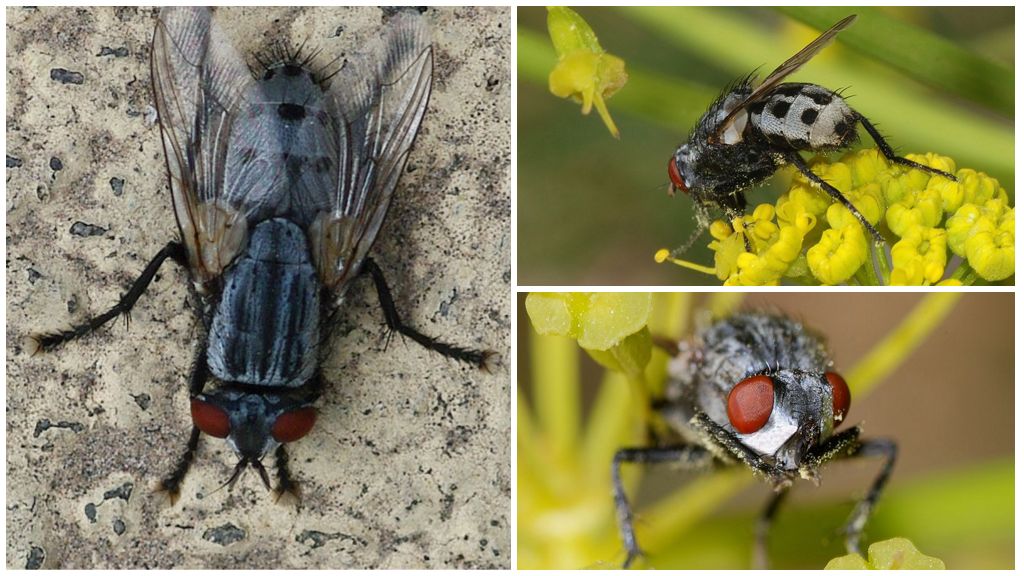
Nutrition
Adults spend most of their lives in the field. They are used as food nectar of flowers, preferring umbrella inflorescences. Favorite goodies of Sarcophila Wolfartii are also plant juices, a pad (the liquid that aphids emit), as well as liquid released from decayed wounds and liquid cattle manure.
Breeding
Female life span from 1 to 4 weeks, males live much less. The development cycle of Sarcophila Wolfartii with complete metamorphosis. However, females are viviparous - they do not lay eggs like their relatives, but carry them in their body. Born larvae go through 3 stages of maturation, in which 2 molts are spaced.
After 2 weeks from the moment of mating, larvae of the first age appear, developing exclusively in the tissues of humans and warm-blooded animals. They exit the mother's body in groups of 10-20 pieces.
On a note!
In total, the Wolfart fly carries up to two hundred larvae. The female tries to get rid of the larvae as soon as possible, starting to devour it from the inside. Usually it lays offspring in places of damage to the skin (in various wounds and scratches), as well as on the mucous membranes of mammals.
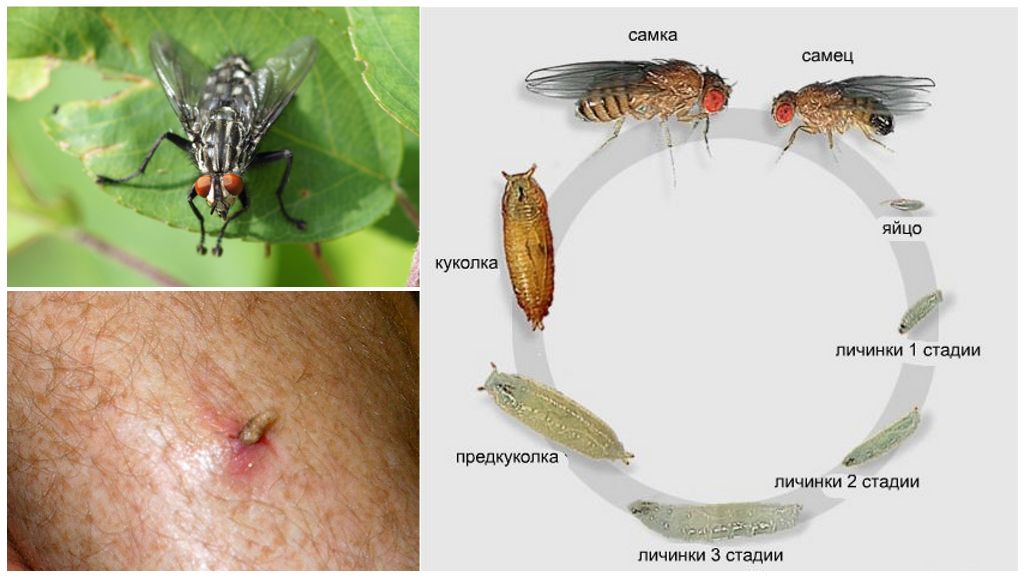
Larval development
Externally newborns fly larvae resemble white worms whose body length does not exceed 1.5 mm. Once in a new habitat, they try to hide in the folds of the skin as quickly as possible or penetrate through damaged places into its tissue. The maxillary sinuses, auricles, eyes and gums are especially susceptible to parasite attacks.
Larvae of the second age, whose body length reaches already 9 mm, are distinguished by larger sizes.Thanks to two mouth hooks, they eat away soft tissues, destroying the blood vessels and nerve endings in the process. Pests are able to get to the bones of the brain.
Larvae of the third age grow up to 2 cm, have a yellowish color and resemble a thick caterpillar. At this stage of development, the parasites stop biting the victim’s body. Leaving it, they fall into the soil, on the structure of which the depth of their penetration depends. The pupation process also takes place there: the outer shell of the larva hardens, forming a puparium.
Interesting!
Adult larvae of the tungsten fly try to crawl out of the wounds in the morning, until the soil is very hot.
At an ambient temperature of 26-28 degrees, the pupal stage takes up to 9 days; in cooler weather, pupation takes up to 3 weeks. After this period, a young wolfarth fly (imago) appears from the pupa.
Larvae that fall into the soil in the fall remain wintering in the pupal stage, ending their development next spring.
Medical value
The bite of a wolfart fly, or rather the attack of its larvae, can have very sad consequences. The insect is the causative agent of myiasis in humans and livestock. Wolfartiosis is a disease caused by extensive foci caused by larvae. The penetration of parasites into the body often leads to loss of hearing and vision, the occurrence of sepsis, encephalitis, osteomyelitis, even a fatal outcome is possible.
If the Volfart Fly Larva was able to bite a person, it must be removed with tweezers. The resulting miases are treated by washing the wounds with a solution of chloroform. With the formation of abscesses, a necrotic tissue site is removed by a doctor, after which antibiotics are prescribed. For the treatment of animal wounds, creolin or lysol is used.
